Pages From The Past: The Dart Arrives
Most Dodge fans assume the Dodge Dart arrived on the scene in 1963 as a replacement for the Dodge Lancer. Yes and no. As this month’s Pages From The Past illustrates, the first mass-produced Dodge to use the Dart nameplate appeared in 1960. This month’s magazine ad depicts the all-new 1960 Dart, which Dodge touted as “America’s first fine economy car”.
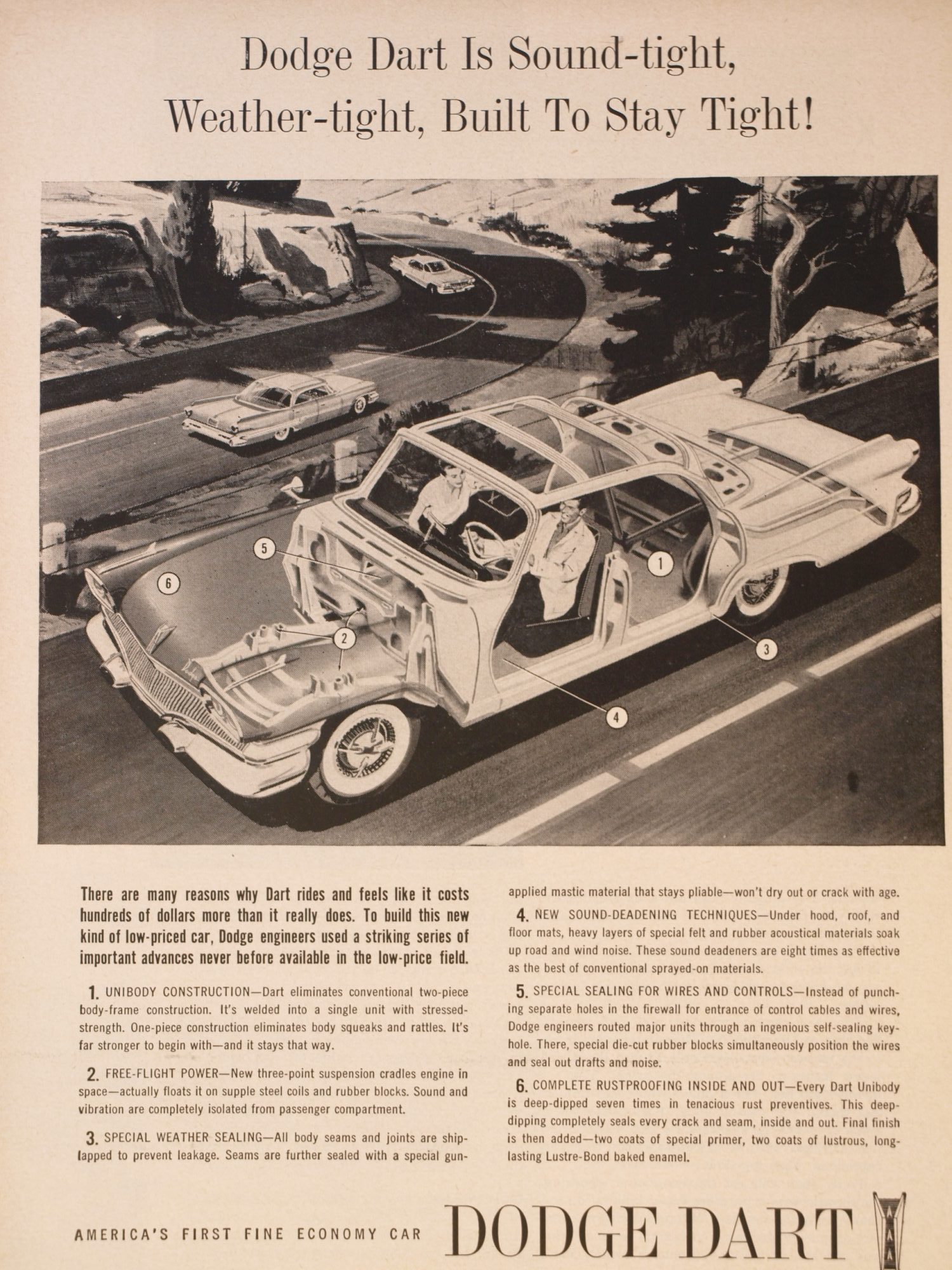
The interesting detail is how – despite its full-size platform – Dodge positioned the Dart as a low-priced economy car. The starting price was $2,278 for a Dart Seneca two-door sedan with the Slant Six and 3-speed manual, just $53 more than a similarly equipped Plymouth Valiant’s $2,225 base price.
To clarify, both cars – the Dodge Dart and the Plymouth Valiant – were entirely new designs for 1960. The Plymouth Valiant was Chrysler Corporation’s first compact platform riding on a 106.5-inch wheelbase (known internally as the A-body), while the Dodge Dart was still a full-size model riding on a large 118-inch wheelbase – but with a new twist.
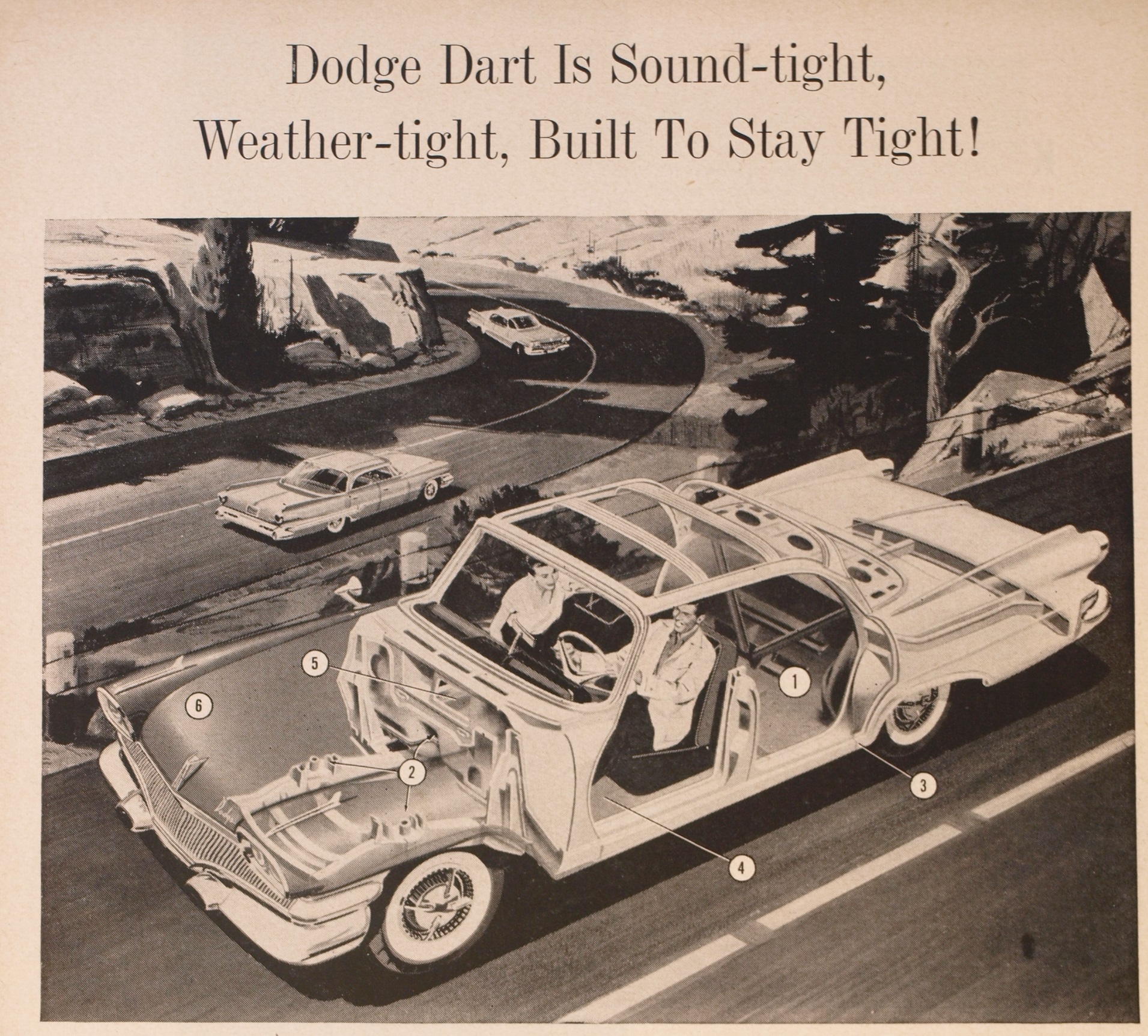
While the 1959 Dodge (Coronet) was of the traditional body-on-frame design, for 1960, the new Dart got a semi-unitized body shell where the frame was welded to the underside of the floor pan which added stiffness and reduced the squeaks and rattles triggered by rubber body mounting bushings and fasteners. As the advertisement reads, the new Dart was “sound-tight, weather-tight, built to stay tight!”
The also-new 1960 Plymouth Valiant had a fully unitized body shell, meaning that the radiator wall, inner front fenders and forward frame rails were permanently welded to the firewall. By contrast, the larger Dodge Dart’s semi-unitized construction was of one piece from the firewall to the tail lamp panel. The front frame was still bolted to the body tub. This family of full-size Dodge vehicles (and Plymouth vehicles too) came to be called the C-body. In the middle came the mid-sized 1962 B-body, which was fully unitized, much like the compact A-body.
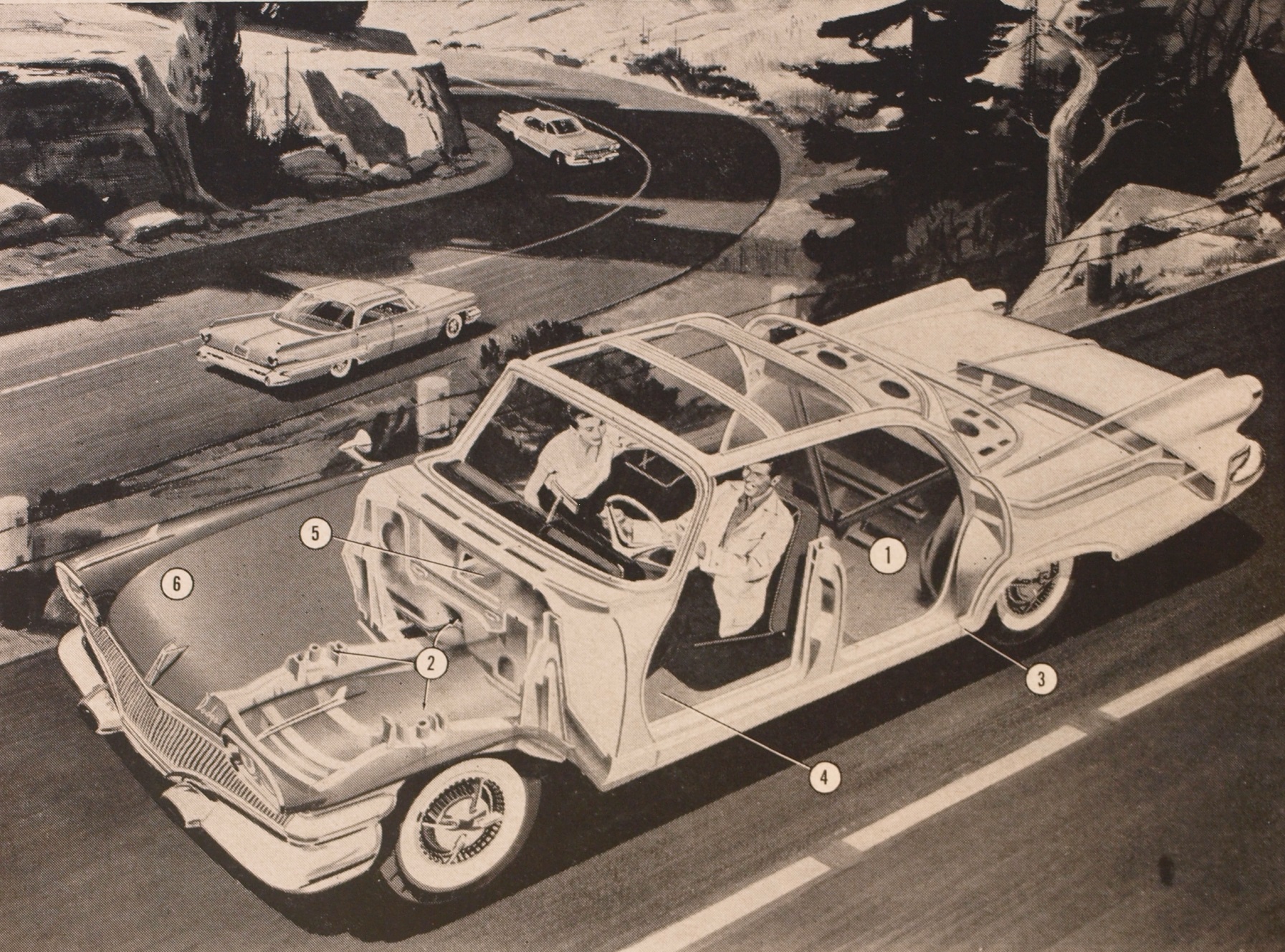
Getting back to this fascinating magazine ad, the see-through illustration depicts a four-door hardtop model. It was one of several available configurations which included two-door hardtops and convertibles and four-door sedans and station wagons. Power choices included the also-new-for-1960 225 Slant Six, 318 poly V8 with two- or four-barrel induction, and 361 and 383 big blocks with two-barrel, single four-barrel and even the ram-inducted D500 383 with dual four-barrels.
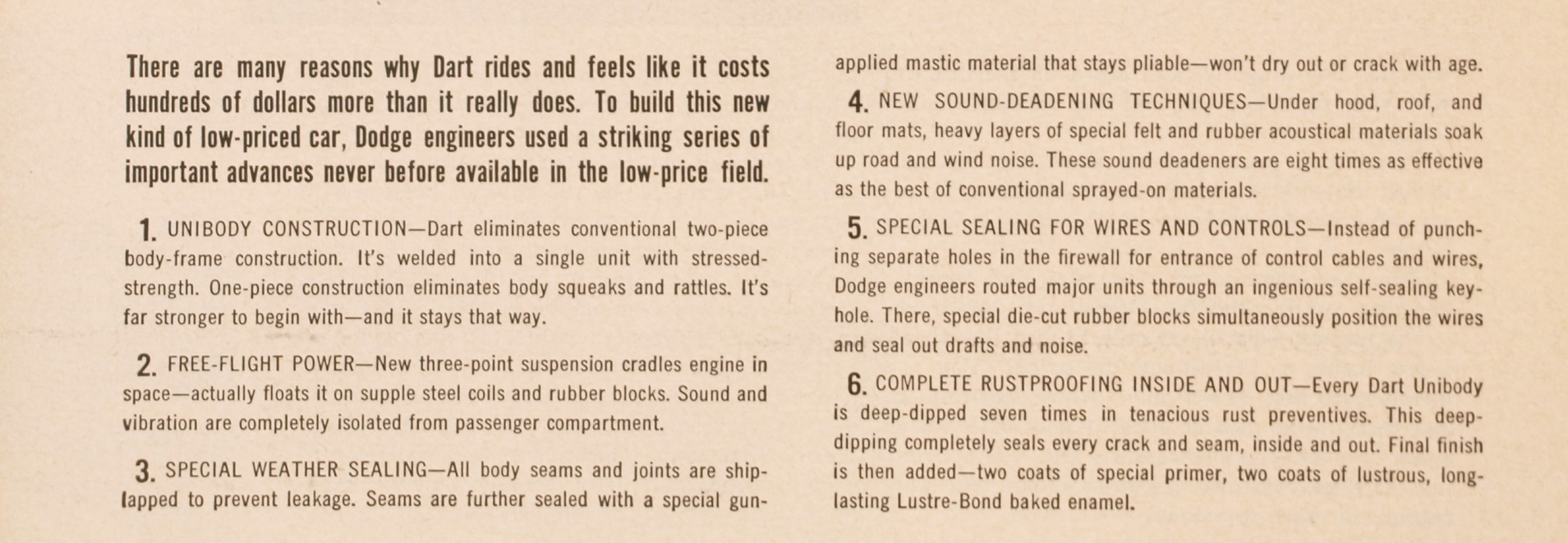
To make the Dart appealing to as many buyers as possible, Dodge split the line into three levels. The entry-level Dart Seneca series, the mid-level Dart Pioneer and the top-tier Dart Phoenix. This detail has confused many a Dodge fanatic who might be more familiar with associating the Dart name with later 1967-1976 models like the Dart GT, Dart GTS, Dart Swinger, Dart Sport and Dart Custom, all of which are based on the more familiar compact-sized A-body platform. And let’s not forget the fact Dodge debuted the mid-sized B-body platform in 1962 with the one year Dart, Dart 330 and Dart 440 nameplates.

And it gets even more confusing. In addition to the all-new 1960 Dart series, Dodge also offered the 1960 Matador and Polara which shared similar – but not identical – styling, rode on a longer 122-inch wheelbase and were strictly V8 powered. Base prices were as high as $3,416 for a Polara convertible, but the one thing they all shared was semi-unitized body construction, something not found on competing makes at the time.
And so that’s the story behind this fascinating Page From The Past, as Dodge launched the Dart nameplate into the mainstream as “America’s First Fine Economy Car”!
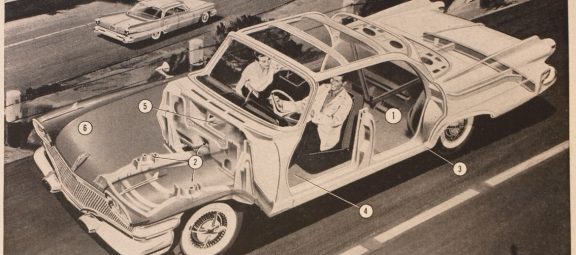
0 Comments